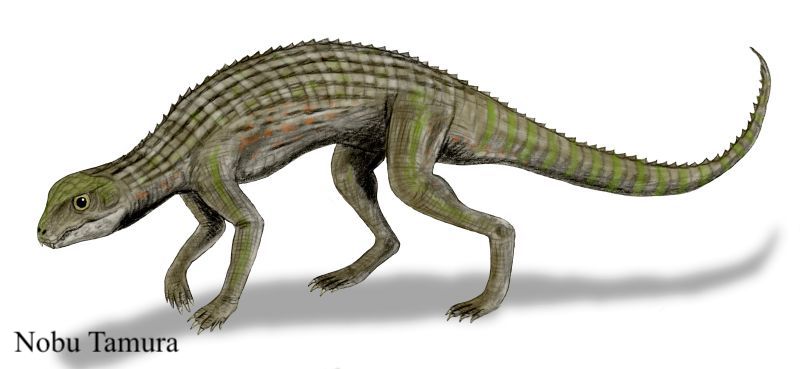Welcome to Adamantinasuchus

Name Definition
Adamantina crocodile
Name Given By
Pedro Henrique Nobre & Ismar de Souza Carvalho in 2006
Location
Adamantina Formation in Bauru Basin of São Paulo state, southeastern Brazil
Classification
Reptilia, Archosauria, Pseudosuchia, Crocodyliformes, Mesoeucrocodylia, Metasuchia, Ziphosuchia
Size
About 50-60 cm long, around 20 cm tall, only a few kilograms
Temporal Range
Turonian - Santonian stages of the late Cretaceous, 93.9 - 83.6 million years ago
Ecological niche
small nocturnal omnivore
Species/Sub Species
A. navae
Diet
Due to the heterodont dentition observed in the skull, Adamantinasuchus probably was able to process meat and certain kinds of plants as part of its diet, making it an omnivore
Introduction
Adamantinasuchus is a genus of extinct ziphosuchian crocodyliforms that lived in Brazil during the late Cretaceous. The holotype consists of a partial skull, partial limb remains, and several damaged vertebrae. Adamantinasuchus is named after the Adamantina Formation in Brazil where it was discovered. The species name navae honors William Nava who collected the holotype UFRJ-DG 107-R of Adamantinasuchus. Some of the right posterior (further back) and anterior (more forward) of the skull is missing. The cranium (majority of the bone in the skull) has been crushed and the left side is mostly missing. The skull is pretty small but is still proportional to Adamantinasuchus’s size. The elliptical orbits of the skull are large, which suggests that Adamantinasuchus may have been a nocturnal animal. The teeth preserved in the skull are noticeably heterodont, with caniniforms, incisiforms, and molariforms present. This may suggest an omnivorous diet for Adamantinasuchus, similar to Chimaerasuchus (though Chimaerasuchus is thought to have been fully herbivorous). While not enough articular bones are provided to show whether its jaws were capable of the movements necessary for chewing plants, the lack of wear on the molariforms, which is usually where the grinding/chewing occurs, suggest that it was only capable of dorsoventral (vertical) jaw movements, so it probably ate food softer than plants. The teeth are also wider on the side which usually makes chewing jaw motions difficult to perform. With this, Adamantinasuchus was probably mainly a carnivore or some kind of carrion feeder, since the incisiforms and caniniforms of Adamantinasuchus are useful for catching and seizing its own prey or tearing off flesh from a carcass while the molariform teeth could have processed it in the back of its mouth. The Adamantina Formation yields the fossils of many other pseudosuchians such as Armadillosuchus, Roxochampsa, Montealtosuchus, Brasileosaurus, and many more species.